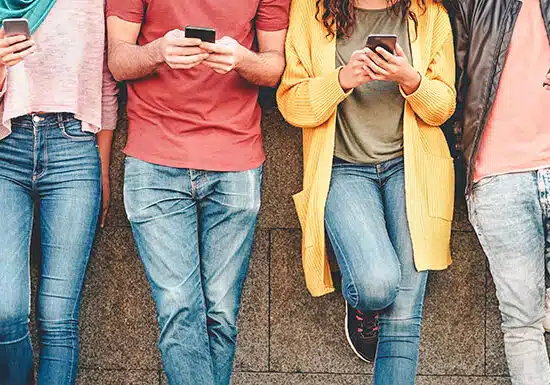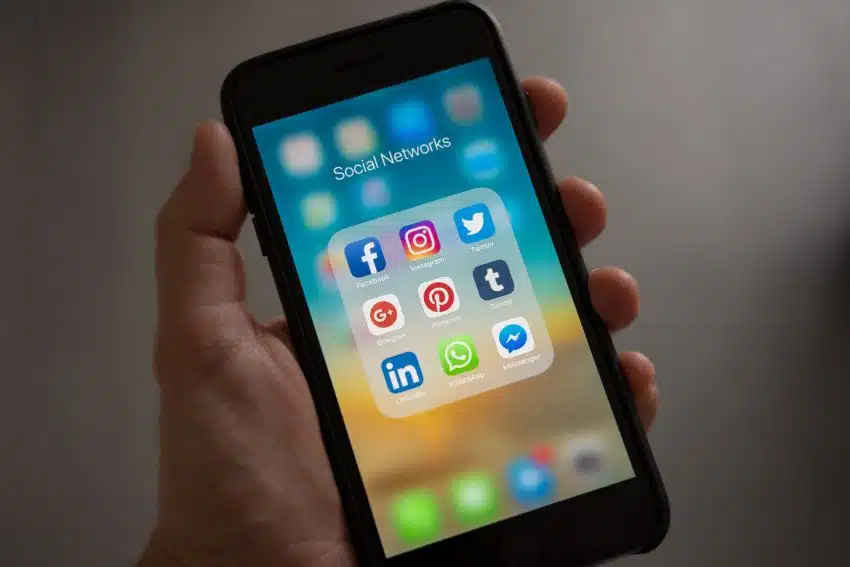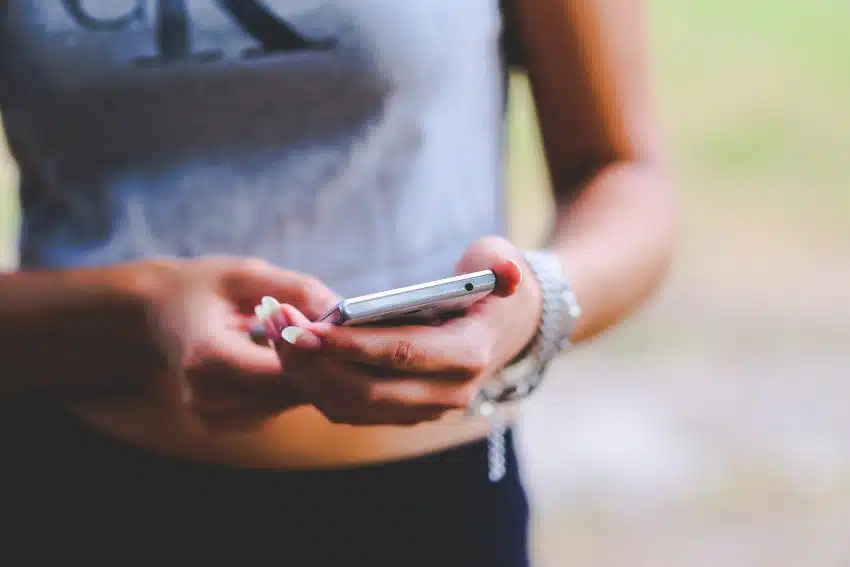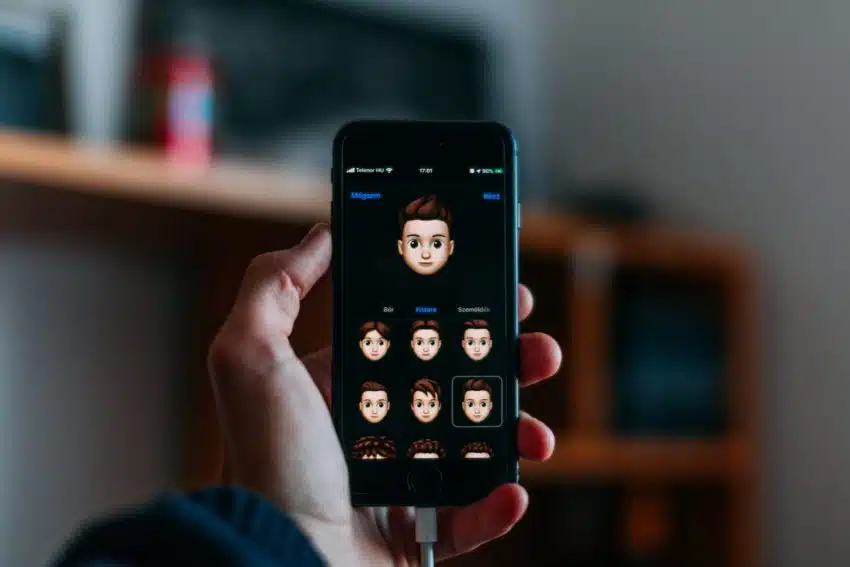How Social Media Affects Communication
Updated: July 8, 2024

It’s no surprise that the widespread use of social media for communicating ideas, personal and professional stories and experiences has had a profound effect on the overall way people communicate today. Just how has social media affected communication, you ask? In more ways than you may think! But not all are bad — just look at our list of social media effects on communication.
What is Social Media?
Social media can be described as the collection of online platforms that involve sharing and collaborating with an online community by posting, commenting, and interacting with one another. The most commonly used social media platforms today are Instagram, Facebook, Twitter, Pinterest, LinkedIn, and Snapchat.
 Photo by Tracy Le Blanc from Pexels
Photo by Tracy Le Blanc from Pexels
Social Media Effects on Communication
Social media has profoundly impacted how we communicate, affecting our personal relationships, the way we receive information, and societal discussions. It has increased connectivity, allowing us to stay in touch with others more easily and share our thoughts instantly. However, it also poses challenges like the spread of misinformation and reduced face-to-face interactions. In 2024, with around 5 billion users worldwide, social media continues to shape our communication norms and behaviors, highlighting both its benefits and drawbacks.
Social Media and its Effect on Exposure to Messaging
Social media greatly influences how we encounter and engage with information. These platforms use algorithms to curate content, shaping what we see based on our preferences and behaviors. This curation impacts the diversity and balance of the messaging we encounter, often creating echo chambers where we are exposed to information that reinforces our existing beliefs. Let’s explore how this constant exposure affects our news consumption, personal expression, and reactions to social cues:
Information Overload
Many people tend to binge on social media, spending hours and hours scrolling though sites. Ultimately, this may lead to a constant craving of more internet and more social media consumption. The more people get, the more they want — and it’s hard to stop the cycle.
 Photo by Kaboompics .com from Pexels
Photo by Kaboompics .com from Pexels
Young People Read News
Today, social media plays a significant role in how young people consume news. According to a 2023 Pew Research Center study, about one-third of Americans aged 18 to 29 regularly get their news from TikTok. This platform has seen substantial growth in news consumption among its users. This trend contrasts with other social media platforms where news consumption has either plateaued or declined. Facebook remains a leading source for news, with 30% of U.S. adults regularly using it for this purpose, while YouTube follows closely at 26%.
For young people, social media is not just a tool for staying connected but also a primary source of information, shaping their understanding of current events and global issues. This shift underscores the evolving landscape of news media, where traditional news outlets must adapt to the preferences of younger audiences who favor digital and social media platforms for their news consumption.
Getting the Full Picture
Stories — a part of Instagram, Snapchat, and Facebook — mean that people get the full picture of an event, activity, or occurrence in someone’s life. We no longer just get a snapshot of a home-cooked meal, we might see the entire process from start to finish.
This has changed the way people think about what to post — there is much less thought put into a post when it is a story that will be erased after 24 hours.
Boredom in Conversation
Here’s a sad social media effect on communication. We are becoming bored when we have real, in-person conversations. People have such a need for social media consumption and that instant, colorful feedback only social media can give, they will often become bored during real conversations, resorting to their phones. This can lead to a decrease in the quality and number of meaningful conversations.
Reactions to Non-Verbal, Emotional, and Social Cues
In-person reactions to non-verbal, emotional, or social cues are changing in that people don’t need to respond to these types of communication when they are online. This leads to less experience and awareness of others’ needs based on these types of cues that can only be received from in-person communication.
Social Media and its Effect on Self-Expression
Social media has dramatically transformed how people express themselves. These platforms offer unprecedented opportunities for people to share their thoughts, opinions, and creativity with a global audience. Features such as posts, stories, and multimedia content let us craft and curate our online identities, making self-expression more accessible and diverse than ever before.
Sense of Urgency
No one has to wait for longer than a few hours for a response, and people have come to expect that timeline for conversations. There is so much of a sense of urgency that people are often anxious if they haven’t heard back from a family member, friend, or partner in a number of hours.
 Photo by Cristian Dina from Pexels
Photo by Cristian Dina from Pexels
Need to Share
Social media has created a feeling among users that they must share whatever they are doing — from restaurant orders, to concerts, to the books they are reading. This can be a social media positive effect because people are getting more exposure to things they might not otherwise, such as new reads. But it can also be a negative effect as it can urge people to become dependent on posting anything occurring in their own lives and painting those occurrences as rosier than they truly are.
 Photo by Vinicius Wiesehofer from Pexels
Photo by Vinicius Wiesehofer from Pexels
How We Value Ourselves
When people see others having a wonderful life, as represented on social media, they tend to have a negative self-image, and start to devalue their own ways of life. In addition, there is a feeling of needing to paint an inaccurately positive and ‘fun’ version of one’s own life which leads to feelings of negativity about one’s ‘real’ life.
Inside Perspective of Afar
One of the positive effects of social media is the ability to get an intimate view of other cultures and places. With social media, especially on Instagram, users are able to see what others are doing around the world. People are exposed to travel ideas, new cultures, and ways of life unlike before.
Broadcasting Live
Broadcasting live started as a fun, innocent idea to share life’s moments, but it’s transformed to become a large part of political movements, sharing some dark aspects of today’s society. The option to post live videos has created an important platform for serious issues that need to be spoken about.
Personalized Digital Messages
Both Instagram and Snapchat have popularized the highly personalized message. People can now completely change their own faces with selfie filters, or draw pictures to send to friends, and more. Creativity soars, which is a great thing, but people can start to spend too much time personalizing picture messages.
Social Media Communication Style
Social media platforms have their own unique ways of communicating, and people often change how they speak and write to fit in. Platforms like Twitter and Instagram focus on short and visual messages, while LinkedIn is more about professional, text-based content. Knowing these differences can help you engage better with your audience.
1. Summarized Writing
Starting with the limited character text messaging of the 2000s, and nowadays with the 280-character tweet, messages have been getting shorter and more concise. Other areas of communication have adapted for summarized writing as well, such as in shortened work memos, shortened academic communication between students and professors, and shortened messages in advertising.
2. Abbreviations
The abbreviated style of communicating that became popular when text messaging started in the 00’s has continued into online conversations. The rise of text messaging and social media has popularized the use of abbreviations and acronyms.
These shortcuts save time and space but have also infiltrated spoken language, email communication, and even academic writing. While convenient, this trend has sparked debates about its impact on literacy and formal writing skills.
3. Unfiltered Interactions
Have you ever heard the term “Keyboard Warrior”? Social media and internet interactions offer a veil between the person sending and the person receiving the message. These interactions are no longer face to face, and this can lead to some unfiltered conversations as people feel they can say anything with no repercussions.
4. GIFs and Emojis
The introduction of using emojis to illustrate a written message or a GIF to express a reaction may seem fun and innocent, but it is also interfering with our ability to properly craft a written response. It ends up being too tempting to respond with a small picture, or a funny moving photo than to use the mind to create a response with words from scratch.
 Photo by Szabo Viktor on Unsplash
Photo by Szabo Viktor on Unsplash
5. Viral Messages
That quick and easy “share” button on so many social media platforms has led to the phenomenon of “going viral.” Messages, videos, and other content can be easily shared between platforms with millions of people in a matter of days.
The Use of Social Media In Business Communication
Businesses use social media to effectively connect with customers, employees, and stakeholders. These platforms allow companies to build strong communities, engage directly with audiences, and personalize their communication strategies.
Social media also helps brands coordinate public relations efforts and adapt to changes in traditional media landscapes. Here are some key ways businesses use social media for communication:
- Building a Community: Companies create communities around their products or services, fostering loyalty and engagement among customers.
- Brands Are Speaking Directly to Audiences: Social media allows brands to communicate directly with their audience, responding to their needs and feedback in real-time.
- Social Media is Changing Traditional Media: Influencers, bloggers, and online personalities can have a significant impact on a brand’s success, often more than traditional media outlets.
- Brands Can Have a More Personal Connection with the Media: Social media enables brands to develop long-term, personal relationships with journalists and media professionals.
- There’s an Opportunity to Coordinate with PR Efforts: Companies can leverage social media for public relations campaigns, finding influencers and collaborators to enhance their reach and impact.
Conclusion
Social media has revolutionized how we communicate, affecting everything from personal expression to business interactions. Platforms like Facebook, Twitter, and Instagram have made it easier than ever to share our thoughts, feelings, and experiences with a global audience. They offer unique opportunities for self-expression and identity curation through posts, stories, and multimedia content. However, this shift also brings challenges, such as spreading misinformation and declining in-person conversation quality. As social media shapes our communication norms, navigating these changes thoughtfully is essential.
In business, social media has become an invaluable tool for engagement and marketing. Companies use these platforms to build communities, interact directly with customers, and create more personalized connections with the media. Social media has also transformed traditional media landscapes, allowing brands to coordinate public relations efforts more effectively. Overall, while social media brings opportunities and challenges, its impact on communication is profound, underscoring the need for mindful and strategic use in personal and professional contexts.
FAQs
What changes has social media brought to communication patterns?
Social media has made communication more immediate and accessible, introducing new forms like emojis and GIFs. It has enabled real-time updates and live interactions, changing the pace and nature of communication.
How has social media influenced interpersonal relationships and interactions?
Social media allows people to stay connected over long distances but can lead to superficial interactions and reduced face-to-face communication quality, sometimes causing feelings of isolation despite being connected online.
What role does social media play in shaping public opinion and discourse?
Social media shapes public opinion by providing a platform for sharing news and opinions, amplifying diverse voices, and allowing rapid dissemination of information. However, it can also spread misinformation quickly and create echo chambers.
How has social media impacted privacy and personal boundaries in communication?
Social media blurs the lines between public and private life, often leading to oversharing and privacy concerns. Users frequently share personal information accessible to a wide audience, subjecting private moments to public scrutiny.
How has social media affected professional communication and networking?
Social media has revolutionized professional networking, with platforms like LinkedIn enabling global connections, job searching, and personal branding. Maintaining a professional online presence and being cautious about public sharing is essential.
How has social media affected the dissemination of information?
Social media enables instant sharing and wide reach of information, making news and updates go viral quickly. However, it also facilitates the spread of misinformation and fake news, making it crucial for users to verify sources.
Can social media be a tool for positive social change and activism?
Yes, social media can drive social change and activism, organizing protests, raising awareness, and mobilizing support for causes. Movements like #MeToo and Black Lives Matter have gained momentum through social media, demonstrating its impact.


 Photo by Tracy Le Blanc from Pexels
Photo by Tracy Le Blanc from Pexels Photo by Kaboompics .com from Pexels
Photo by Kaboompics .com from Pexels Photo by Cristian Dina from Pexels
Photo by Cristian Dina from Pexels Photo by Vinicius Wiesehofer from Pexels
Photo by Vinicius Wiesehofer from Pexels Photo by Szabo Viktor on Unsplash
Photo by Szabo Viktor on Unsplash